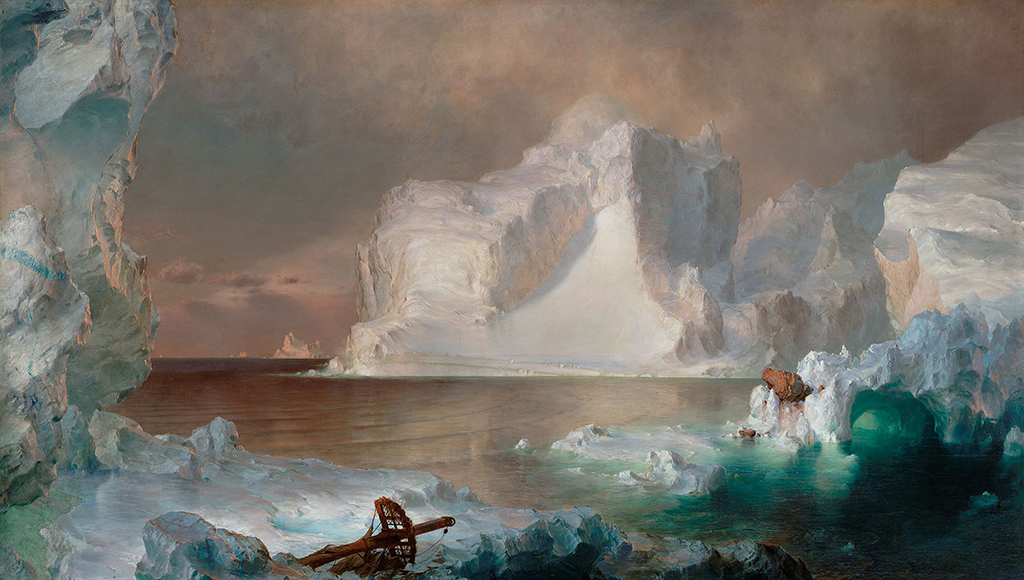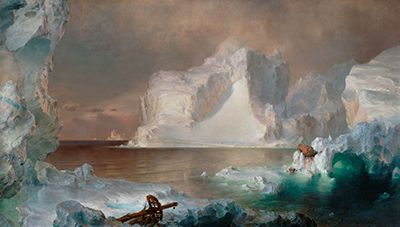The Icebergs was created in 1861 by Frederic Edwin Church, and is a large oil on canvas landscape painting with the dimensions of 1.64m by 2.85m. The painting is in the Dallas Museum of Art.
The work was inspired by the author's trip to the Labrador and Newfoundland coastal area and the scenery that he experienced there. It was at a time when arctic exploration was a popular topic, with expeditions and individuals coming to a sad end during such trips, and so the painting, especially such a big painting, sparked interest, although the American Civil War had a bad effect on art appreciation at the time. The painting also inspired a number of aspiring artists to copy it, although some critics found it too bland and unexplained.
The painting was remarkable in being a one-painting art show in New York and other major cities when it was released. The work was bought by a UK art collector but it subsequently vanished from public view in 1901, after the collector's death. It was discovered in a home in the North of England some 78 years later. The painting was auctioned in York for 2.5 million USD, a historical record for the sale of a painting, as interest in the artist's work was revived and strong at that point. The buyers, a local businessman and his wife, later donated the painting to the Dallas Museum of Art, where it remains to this day. Church also produced a smaller version of the painting in 1863, and this is in the Mattatuck Museum in Connecticut.
Church did over a hundred sketches of icebergs during the trip to the arctic that inspired this painting, he then produced another arctic inspired painting Twilight in the Wilderness before he embarked upon a series of studies to envision the best outlook for the The Icebergs. The painting is an atmospheric and haunting view of arctic ice. The observer is presumably standing on ice and looking at the land and seascape. Slightly to the left of the central foreground a solitary mast from a wrecked ship is seen leaning behind a block of ice.
Ice runs from the right of the central foreground and through the left, up and up the left side of the painting. To the right of the foreground is dark water with caps of ice in it. On the right central, the ice towers again, and a strance ice grotto has formed over the water, possibly with the flow of water against the ice, the colour of the water in and around the grotto is a remarkable turquoise. A few stones free from ice become a focal point.
In the centre of the painting, a large iceberg looms and takes focus. The backwater containing the ice and the viewer's standing point, merges with the sea, where the water is dark and shadowy, and little waves roll in. Further out, a further iceberg and ice caps can be seen. In the background, a dark and stormy sky is mingled with the promise of snow and sunset, with the glow of coming sunset reflecting on the water and the ice.





